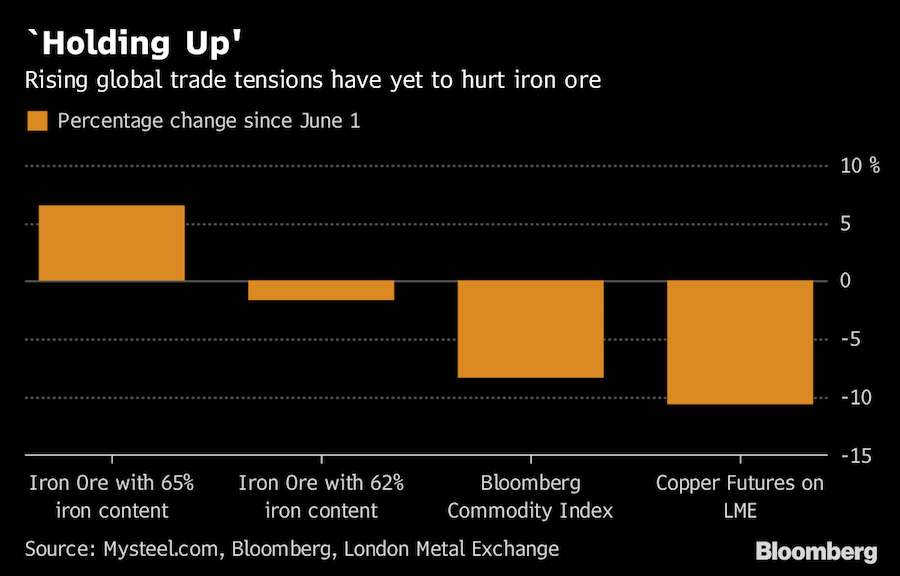
Iron ore’s become the odd man out as a spike in global trade tensions hurts commodities, with importers in top user China scooping up cargoes to feed booming mills and the government intensifying an anti-pollution drive. That’s helped benchmark prices to stay the course.
While copper in London is headed for a sixth weekly drop and the Bloomberg Commodity Index has swooned from a May peak, spot 62 percent iron ore has maintained its run in the $60s a metric ton. High-grade iron ore has done even better, ascending into the $90s and hitting the highest level since March.
“Iron ore is holding up amid market turmoil,” Morgan Stanley said in a report this week, noting the premium for high-grade material has hit an all-time high. The outperformance compared with metals “is partly due to the different nature of its end-market i.e. most steel is installed in the domestic capital stock, so not immediately impacted by international trade tariffs.”
Iron ore’s resilience in recent weeks even as trade tensions flared is a boon for global miners including Rio Tinto Group, BHP Billiton Ltd. and Vale SA, all of which reported bumper production figures this week. While President Donald Trump’s tariffs on billions of dollars of Chinese goods, plus Beijing’s vow to retaliate in kind, have hurt many raw materials, China’s gargantuan steel industry is still pushing out record volumes, according to official figures.
“The data has probably been a lot more positive than the other sectors, steel production is up about 7 percent,” Australia & New Zealand Banking Group Ltd. senior commodity strategist Daniel Hynes told Bloomberg TV. For Chinese investors trading local iron futures, “their outlook on the market is certainly a lot more positive than the global scene and the global investor,” he said.
Iron ore’s strength was in view on Wednesday as futures in Singapore rose, while on the London Metal Exchange copper, nickel and tin traded lower. SGX AsiaClear futures were up 0.4 percent at $63.95 a ton at 9:11 a.m. in London as LME copper slumped for a third day toward $6,000 a ton.
China churned out a record volume of steel in the first half as mills’ margins improved amid growing demand from sectors including property. At the same time, policy makers have stepped up efforts to boost air quality via capacity curbs, aiding steel prices and buttressing demand for high-quality iron ore.
“What we’re seeing is a change completely because of pollution measures in China toward higher-grade ore,” Vivek Dhar, an analyst at Commonwealth Bank of Australia, told Bloomberg TV. “We’re seeing this preference for high-grade ore reach highs that we haven’t seen before.”